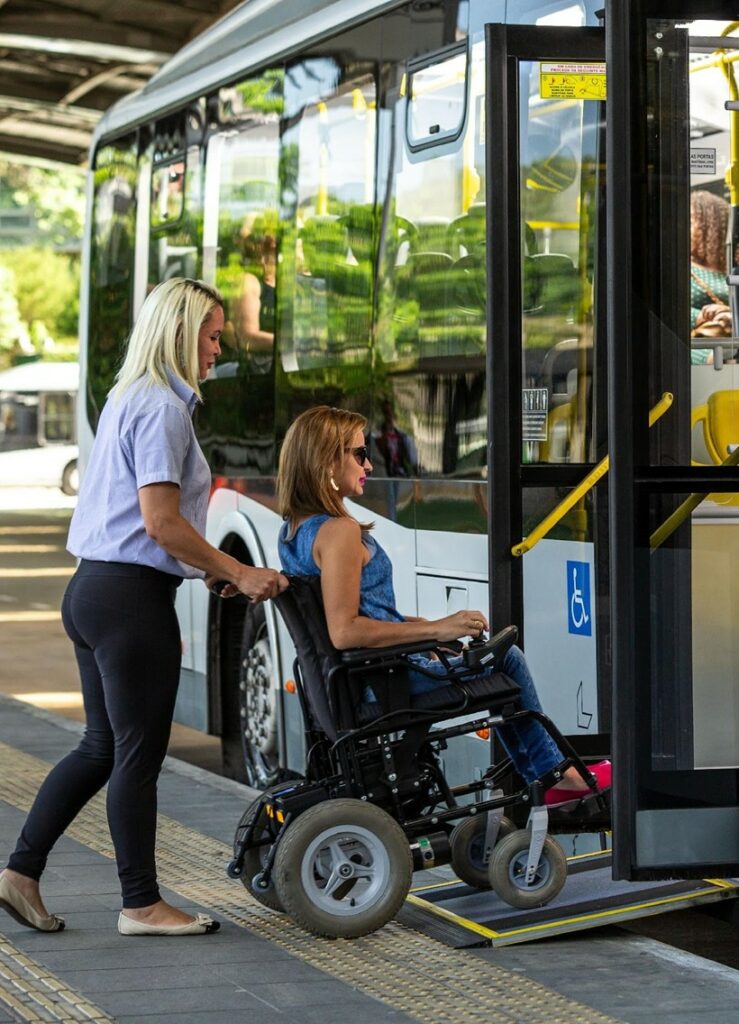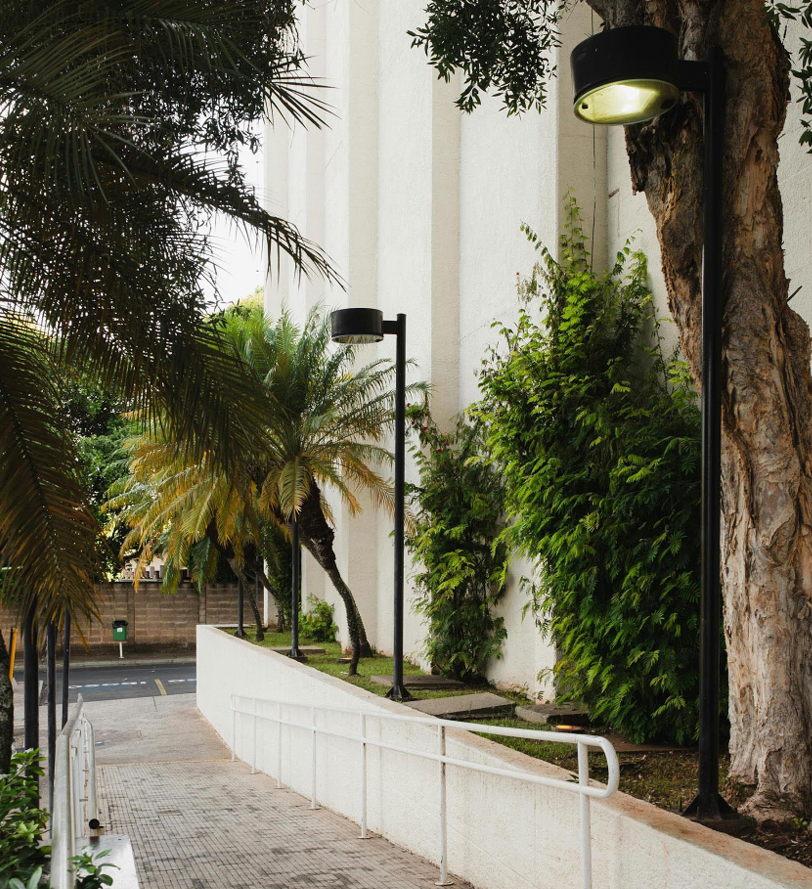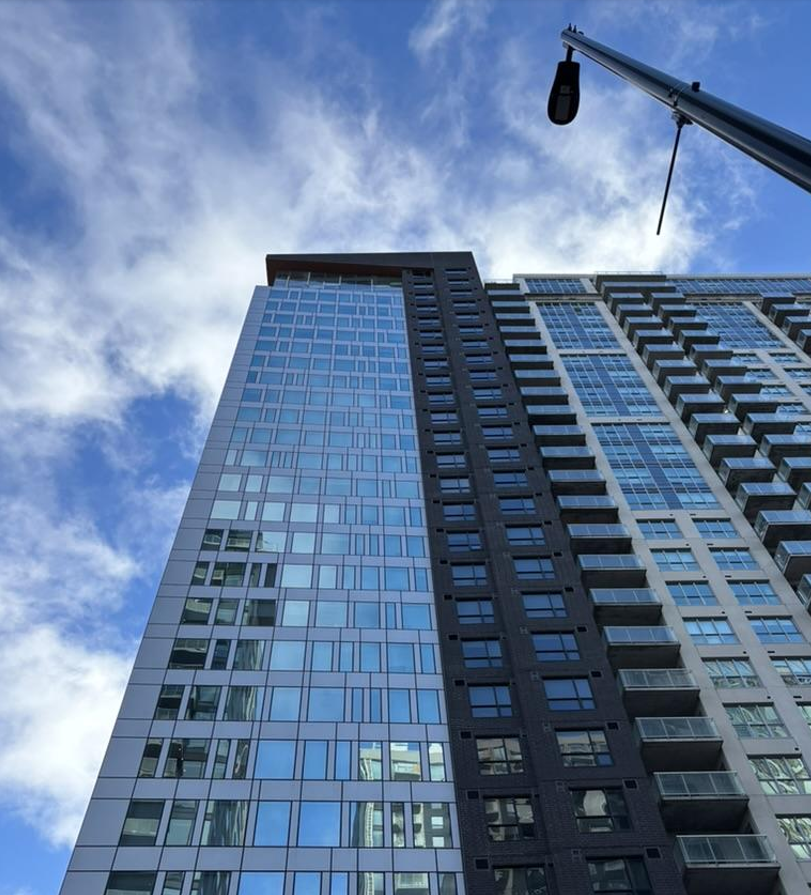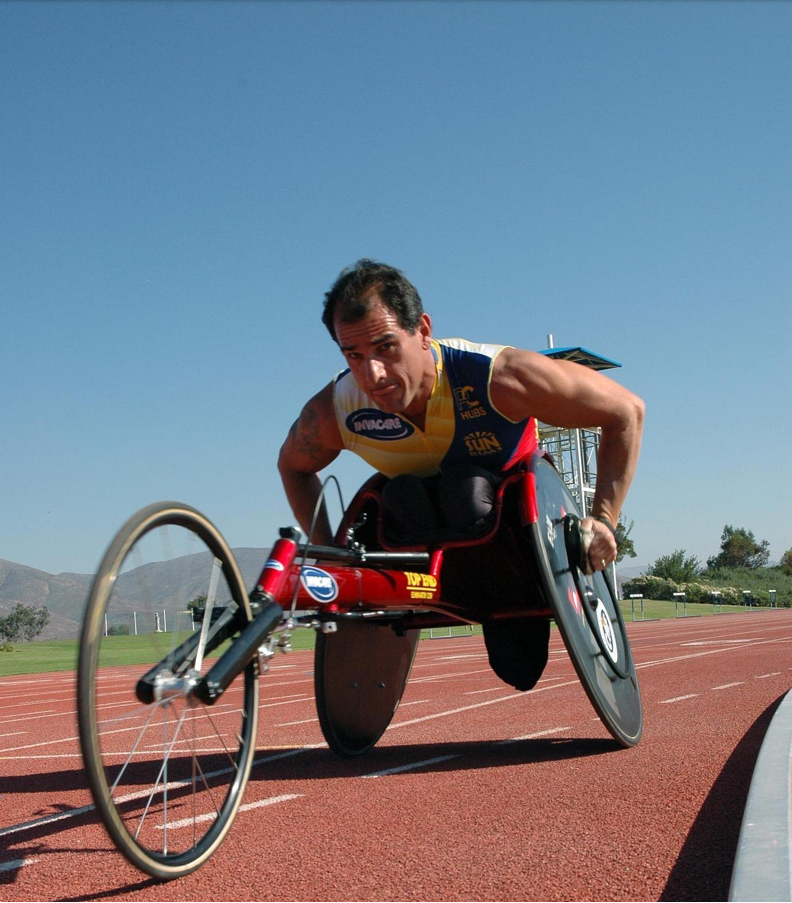
What is an accessible and inclusive city?
An inclusive city offers spaces designed and developed in a way that ensures universal accessibility, allowing everyone, regardless of their level of ability, to travel and participate fully in social, democratic and economic life. These locations must be sufficiently varied and close to one another so that users can get around quickly and safely to carry out their daily activities.
An accessible and inclusive city is underpinned by three key elements:
- Firstly, it ensures public and private spaces are universally accessible, giving everyone equal access to and use of them. Knowing that the premises are universally accessible allows users to visit these sites with confidence, knowing that they can carry out their desired activities there.
- Secondly, it promotes density, compactness and a mix of uses and functions, creating a range of activities within a short distance. Having a diverse range of services and facilities close to home makes it quicker and easier for people to meet their needs and carry out their activities on a daily basis. This dynamic also makes it possible to meet and mix with new people and build relationships within the neighborhood that foster mutual aid.
- Thirdly, an accessible and inclusive city guarantees efficient connections between the different activities thanks to simple and fluid circulation. Being able to move easily, quickly and safely from place to place by different modes (walking, cycling, motorized mobility aid, public transit, car) gets people active, reduces isolation and promotes healthy lifestyle habits.
An accessible and inclusive city is part of current urban planning trends, such as the human-centred city, transit-oriented development (TOD), sustainable development, and green, active and healthy neighbourhoods. It also brings an innovative aspect—living environments designed for everyone.
Overview of the situation
Over the past 40 years, architectural and development projects promoting greater accessibility have focused primarily on isolated elements such as buildings, sidewalks, intersections, parks, buses, furniture, etc., without any connection or coordination to create a continuum between these places. Although many cities now have several accessible components, persons with disabilities often see these facilities as fragmented. Significant disparities exist across regions due to lack of resources, knowledge or motivation among decision-makers. To carry out their everyday lives, individuals must use several components of the city. However, there are too many discontinuities interrupting their daily plans.
Urban planning can help to better connect these components. It is defined as [Translation] “all the sciences, techniques and arts relating to the organization and development of urban spaces, with the aim of ensuring human well-being, improving social relations and preserving the environment.”1 Urban planning emerged at the beginning of the 20th century in response to a need for larger-scale planning in the face of rapidly growing cities, where the lack of coordination was creating a dangerous, dysfunctional mess.
Urban planning is a municipal responsibility. Cities have a range of tools to plan and regulate the development, transformation, redevelopment or consolidation of the entire municipality or a neighbourhood or site. They must nevertheless respect governmental and regional guidelines, whether for metropolitan areas, agglomerations or regional county municipalities (RCMs).
The main tools of municipal urban planning fall into three categories:
- The first concerns high-level planning, which covers the entire territory and forms the basis for the establishment of the various regulations: the Urban Plan and the Transport and Mobility Plan. Given the importance of aligning urban planning, transportation and mobility, many municipalities now use an integrated plan, the Urban Planning and Mobility Plan.
- The second category includes the regulations for the entire territory of the municipality, detailing the requirements relating to permitted uses, building layout and form, traffic routes, subdivisions, etc. These are the Zoning By-law, the Form-Based By-law, the Subdivision By-law and the Construction By-law.
- The third category concerns regulations affecting a specific part of the territory, i.e., areas requiring special attention, areas undergoing a development project by a single developer, or areas where conditions for the acceptance of a non-conforming use are specified. These are the Special Planning Program, the Comprehensive Development Plan By-law, the Site Planning and Architectural Integration By-law and the By-law concerning specific construction, alteration or occupancy proposals for an immovable. Each of these tools can be leveraged to make the municipality more accessible and inclusive.
All municipalities required to produce an action plan for the integration of persons with disabilities have an urban planning department and the tools mentioned above. However, few are using them in the development and implementation of their action plans. What’s more, few seniors’ or persons with disabilities’ associations advocate for the use of municipal planning during the various committees and public consultations.
Standards and obligations
Good practices
Available resources
Training:
- Conception sans obstacle, vos projets sont-ils vraiment conformes? [Barrier-free design, are your projects truly compliant?], Ordre des architectes du Québec.
- Aménagements piétonniers, parcs, places publiques, sécurisation aux abords des chantiers, urbanisme, design universel [Pedestrian, park, and public space development, safety around construction sites, urban planning, universal design], Société Logique.
- Training | ideaux.ca, Idéaux.
Subsidies
-
Federal:
Enabling Accessibility Fund: financial assistance for large and small development projects, Government of Canada.
-
Provincial:
- Petits établissements accessibles [Small accessible establishments program]: financial assistance to owners and tenants of commercial, business or community buildings that are not subject to a legal obligation in terms of accessibility so they can perform the work to comply with the Construction Code’s accessibility requirements, Société d’habitation du Québec.
- Programme d’accessibilité des établissements touristiques [Tourism establishment accessibility program]: financial assistance for improving accessibility of tourist establishments, Ministère du Tourisme.
-
Municipal:
Check the types of universal accessibility subsidies available in your municipality.
- Montréal
- Subsidy for universal access to businesses: financial assistance for making existing small businesses accessible, Ville de Montréal.
- Ville de Québec
- Programme Petits établissements accessibles [Small accessible establishments program]: program to improve accessibility in small establishments for persons with disabilities or with reduced mobility.
- Victoriaville
- Victoriaville ville inclusive [Inclusive city]: financial assistance program for residential, commercial and service building accessibility in Victoriaville.
- Trois-Rivières
- Accessibilité universelle aux établissements commerciaux et de services [Universal accessibility in commercial and service establishments]: a program promoting barrier-free and safe infrastructure in all in commercial establishments in certain areas.
- Montréal
Documents:
- Universal design and municipal planning: Guide for cities wishing to introduce universal accessibility into their planning by-laws. This guide presents examples in Québec that have a positive impact on universal design, Société Logique.
- Guide d’interprétation des dispositions relatives à l’accessibilité universelle dans le Schéma d’aménagement et de développement de l’agglomération de Montréal, [Guide to understanding the universal accessibility provisions in the land use planning and development concept of the agglomeration of Montréal], Ville de Montréal.
Fact sheet prepared in collaboration with Société Logique, with feedback from Idéaux (inclusive and universal accessibility design consulting firm), and DéPhy Montréal.
- Centre national de ressources textuelles et lexicales
Related fact sheets in this guide
To ensure inclusion in urban planning, also consult the following fact sheets:







